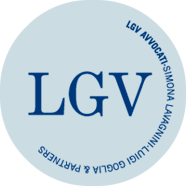LGV AVVOCATI WINS BEFORE THE SUPREME COURT IN A CASE ON THE LIKELIHOOD OF CONFUSION BETWEEN TRADE MARKS
14/09/2017
In a recent decision the Supreme Court excluded the responsibility of a company – defended by LGV – accused of trade mark infringement and rejected the claim made by the opposing party requesting the ascertainment of the exclusive ownership of the disputed mark and assignment of the domain name registered by the defendant.
With this decision, the Supreme Court re-affirmed the principle according to which the evaluation of the risk of confusion must be carried out by the judge in the course of proceedings on the merits. The judge must ascertain, on one hand, the identity or similarity of the two signs and, on the other, the identity and similarity of the products. According to the Supreme Court, these evaluations cannot be considered independent from one another, in so far as they are both instruments which aid in identifying so-called “confusion among corporations”. The Court also stated that the inclusion of two products within the same class is not adequate for the purpose of proving their similarity just as, on the contrary, similarity cannot be excluded by the fact that two products are listed within different classes. It follows that the owner of the previously registered mark cannot per se forbid the use of the distinctive sign in any form – including that of the domain name – where there is no risk of confusion in relation to the products or services. In this case, the infringement of the mark by the petitioner was excluded in that the disputed mark relates to dissimilar products.
The judgment confirms the decisions given in the previous stages of the proceedings and also ruled out that the defendant had committed acts infringing the provisions on unfair competition, given that the existence of a risk of confusion cannot be presumed – not even in the case of a famous mark – on the sole basis of the existence of a risk of association. For positively proving the existence of a risk of confusion, evidence of such risk must be produced and attention given to the persons who share the same commercial needs and therefore turn to the products which can satisfy those needs.
